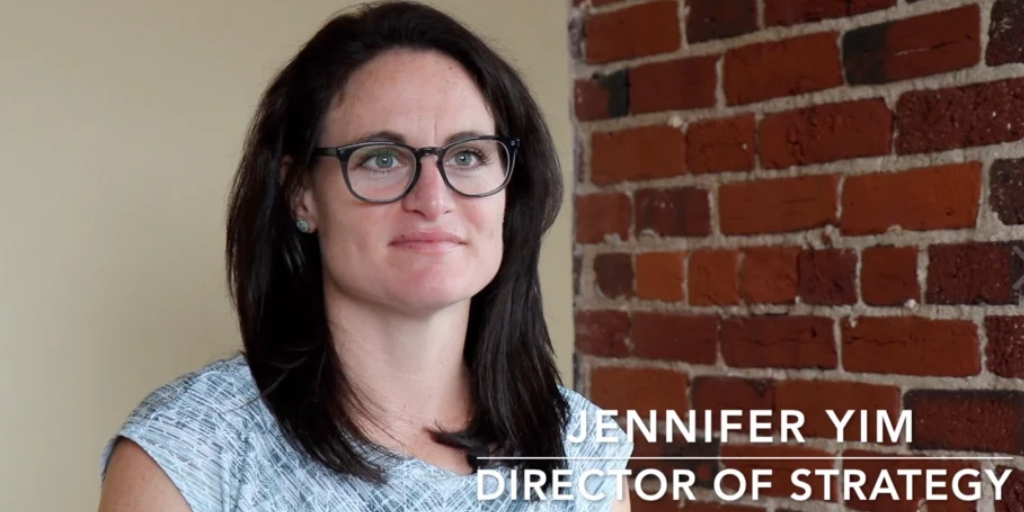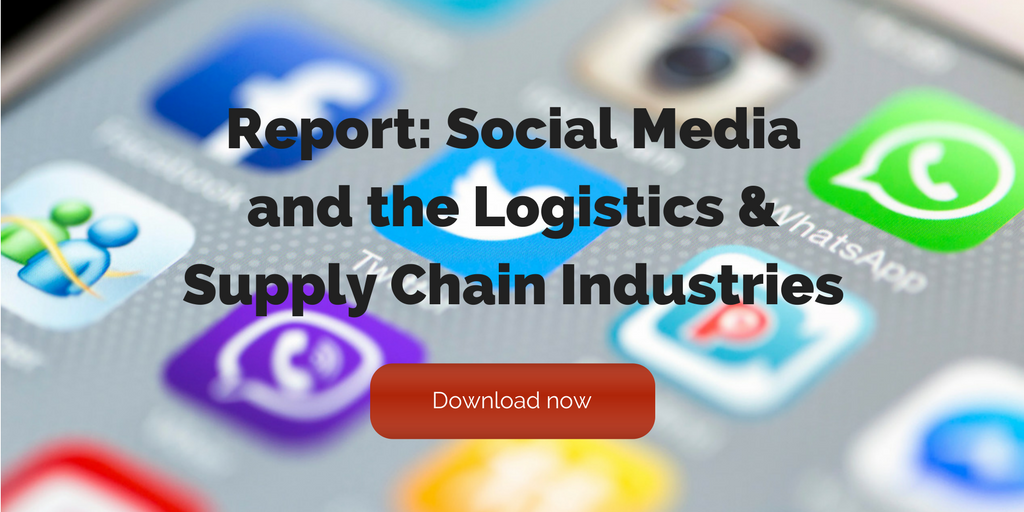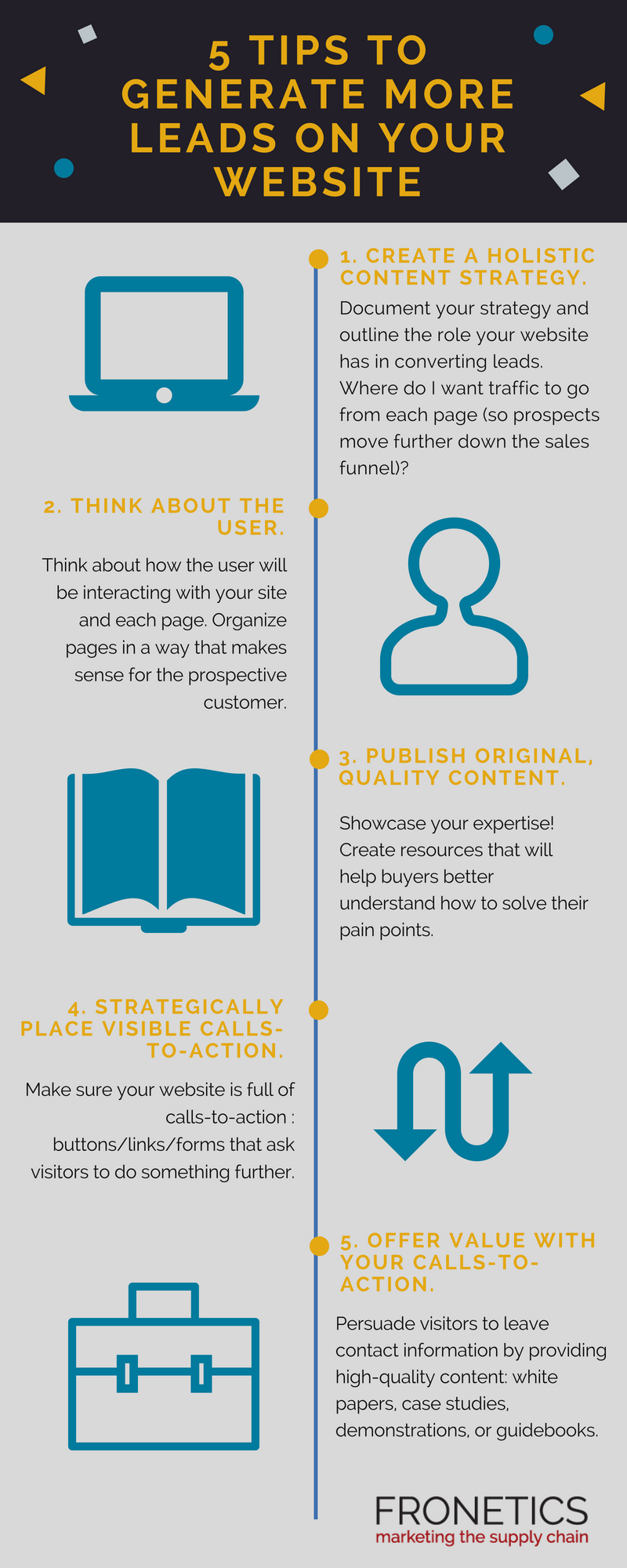
by Fronetics | Oct 29, 2018 | Blog, Content Marketing, Logistics, Marketing, Strategy, Supply Chain
What’s more important: prioritizing conversions or building traffic? The simple answer is both. Here’s why you need to balance your efforts for the best results.
The argument for building traffic or optimizing for conversions has no end. Like we stated in our earlier post, it’s a chicken-and-egg style debate. If you don’t optimize for conversions, what is the point of directing traffic to your site? On the flip side, if you don’t build traffic, who is visiting (and converting) on your site?
The problem is countless variables affect which of these goals you prioritize and when. Determining what you should be investing more energy into is dependent on your business, your strategy, and your target audience. Make sure you’re considering all factors when determining what makes the most sense for your brand and its online presence.
Why focus on conversions?
There are three main arguments for prioritizing conversion optimization:
- Low investment, high yield: The return on investment is significant, especially given the low cost of entry and easy process.
- Traffic optimization: while you may not increase traffic, by focusing on conversions you can increase the value of visitors to your website.
- Reinvestment potential: conversions will help generate funds to reinvest in your marketing effort.
All of these arguments focus on quality over quantity. By prioritizing conversions, every visitor becomes more valuable. Even with lower numbers of visitors to your website, if your conversion rates are high, you still realize a substantial return on your investment. The low cost of conversion optimization also makes it easy to implement without breaking the bank. We’ve even done some of the work for you, giving you tips when creating your landing pages.
Why focus on building traffic?
If you aren’t getting visitors to your website, there’s no point in worrying about conversions, right? But that’s not the only reason building traffic should be a priority. A few benefits of focusing on traffic include:
- Brand recognition: visitors will become familiar with your brand and content
- Momentum: concentrating on traffic is a long-term strategy and committing to the long-term gives your marketing efforts time to build momentum.
- Optimizing for value: there are a lot of metrics affiliated with building traffic, this allows you to collect and analyze data to see how you’re doing and to constantly improve.
By increasing traffic to your website and familiarizing new audiences with your brand, you have more opportunities to generate leads and those leads can turn into sales.
Why balance is the answer
[bctt tweet=”The most important thing to remember is that your content marketing strategy is a work in progress that is continually being tweaked. You’ll need to spend time and money prioritizing both building traffic and optimizing for conversions. ” username=”Fronetics”]
The most important thing to remember is that your content marketing strategy is a work in progress that is continually being tweaked. You’ll need to spend time and money prioritizing both building traffic and optimizing for conversions. Here’s Jennifer Hart Yim, Director of Strategy at Fronetics, to explain why we think you need to focus on both to maximize your efforts.
Video: Focus on Conversions or Building Traffic First?
Related posts:


by Fronetics | Oct 17, 2018 | Blog, Content Marketing, Logistics, Marketing, Strategy, Supply Chain
Wondering whether you should be prioritizing building traffic or optimizing for conversions? Here’s the case for each.
I currently have a client trying to decide what to prioritize: building traffic to his website or optimizing current content for lead conversions. It’s a chicken-and-egg-style debate. If you don’t increase traffic, who will be on your site to convert? But, if you don’t optimize for conversion, what good is traffic to your website?
As with any chicken-or-egg question, there is neither a simple nor a definitive answer. What you should prioritize at any given time is highly individual, and dependent on factors unique to your business. Consider the case for prioritizing each, while evaluating and bearing in mind where your business is in building its online presence.
The egg: the case for prioritizing traffic
Maybe you’re confident the egg came first—after all, in some ways, it’s the obvious answer. Without traffic to your website, there’s not much point in optimizing for conversion, since there won’t be any leads to convert in the first place. According to AudienceBloom founder and CEO Jayson DeMers, there are three main points to the case for prioritizing traffic:
1) Brand recognition
Conversions aren’t the only thing of value that comes from a traffic-heavy website. “Every visitor who makes it to your site will have the chance to see your brand, read your content, and become more familiar with your company,” says DeMers, writing for Forbes. Building traffic to your website lets you reap these benefits, which will naturally drive up your conversions over time.
2) Long-term strategies
Because effective traffic-building strategies pay off exponentially the longer they’re in place, it makes sense to put them first. Giving your SEO and content marketing efforts time to build momentum ensures that you’ll reap the maximum benefits.
3) Optimizing for value
The best way to determine if your conversion strategy is working and how to improve it is to collect and analyze data. A high traffic volume gives you a testing ground. “Without a steady stream of visitors to test,” says DeMers, “you’ll be flying blind.”
The chicken: the case for prioritizing conversions
Maybe you’re one of those people who wonders where the egg comes from in the first place. While it’s true that without traffic, conversions are unlikely, it’s equally true that a website that isn’t optimized for conversions is not to your best advantage. DeMers again sums up the three main arguments for prioritizing conversion optimization:
1) Low investment, high yield
One of the best things about conversion optimization is that, while it does require ongoing efforts, your initial process is relatively cheap and easy. Check out our guide for creating effective landing pages, for example, and you’ll discover that optimizing for conversions doesn’t have to break the bank.
2) Traffic optimization
This is where quality is more valuable than quantity. “Focusing on conversions first instantly makes every visitor to your website more valuable,” says DeMers. Even if your traffic volume isn’t massive, if your conversion rate is higher, you’re ahead at the end of the day.
3) Reinvestment potential
If your business has limited funds to invest in website optimization, prioritize conversions. “Assuming your conversion strategy is successful early on,” writes DeMers, “the extra revenue you’ll generate from all your new traffic will give you more money you can use to invest further — in the realms of both traffic and conversion.”
The scramble: why you should balance your efforts
[bctt tweet=”Whether you chose to place a heavier emphasis on traffic or conversions, you ultimately want balance in your efforts. “If you fully invest in either side without investing at least slightly in the other, you aren’t going to see meaningful results,” points out DeMers.” username=”Fronetics”]
Whether you chose to place a heavier emphasis on traffic or conversions, you ultimately want balance in your efforts. “If you fully invest in either side without investing at least slightly in the other, you aren’t going to see meaningful results,” points out DeMers.
So far, science hasn’t been able to settle the chicken-or-egg question. In the same way, we can’t tell you whether it makes sense for you to put a higher priority on traffic or conversion optimization. But thinking through the case for each should help you decide what makes sense for your business. Just remember not to put all your eggs in one basket.
Related posts:


by Fronetics | Jun 21, 2018 | Blog, Content Marketing, Logistics, Marketing, Supply Chain
If you’re looking to generate more leads on your website, you need to create opportunities to capture visitors and implement a strong content strategy to encourage engagement.
Lots of supply chain and logistics companies are catching on to the benefits of content marketing. And of those, many are implementing a content marketing strategy to plan and execute their marketing.
[bctt tweet=”There’s no point in pouring a bunch of time, money, and resources into a robust content marketing program if the website that you’re driving traffic to stinks.” username=”Fronetics”]
But there’s an issue a lot of supply chain and logistics companies are running into: a weak website that doesn’t encourage the generation of leads. Essentially, there’s no point in pouring a bunch of time, money, and resources into a robust content marketing program if the website that you’re driving traffic to stinks.
In a recent post, we talk about what a weak website looks like. If you think you may fall into this category, don’t fret. There is still time to generate more leads on your website.
Consistently producing quality content and making sure you’re utilizing various distribution channels — social media, a blog, etc. — will help draw your target audience to your website. Once they’re on your site, you need to make sure they have a positive user experience. And more importantly, they need ample opportunities to learn more about your products and services.
These opportunities to engage with your content help move users down the sales funnel. You’ll capture leads that have the potential to become sales.
So how do you ensure your website is a lead-generating machine? Here are five tips to generate more leads on your website.
Infographic: 5 tips to generate more leads on your website

(Made with Canva)
Most importantly, remember to be prudent about the role your website plays in the lead-generation process. A strong website with quality content, great visuals, and easily identifiable calls-to-action only works to generate leads and push users down the sales funnel. You’ll still need someone to help close the deal.
Related posts:


by Fronetics | May 23, 2018 | Blog, Content Marketing, Logistics, Marketing, Strategy, Supply Chain
If you’re hoping to generate more leads on your website, you’re going to have to develop a holistic content strategy and create many strong calls-to-action.
You may have read part one of this mini-series about the importance of having a solid website if you’re going to invest in content marketing. Essentially, there’s no point in pouring a bunch of time, money, and resources into a robust content marketing program if the website that you’re driving traffic to stinks.
Be thoughtful about the role your website plays in the lead-generation process. It’s a really important piece of the puzzle that companies often overlook.
Consistently producing quality content and distributing it through various channels, like social media, will help attract your target audience to your website. But unless you provide them with a good user experience while they’re there — and give them plenty of opportunity to opt in to learn more about your business — you’re not going to move them down the sales funnel. And you’re not going to generate more leads on your website.
So how do you ensure your website is a lead-generating machine? Here’s what I know.
5 tips to generate more leads on your website
1) Create a holistic content strategy.
I can’t overstate the importance of creating a content marketing strategy, documenting it, and then designating someone to lead it if you want your content marketing to be successful. As part of that strategy, you should outline the role your website will play in assisting the conversion of leads.
Ask yourself these questions:
- Do different pages of my website suit prospects at different stages of the buyer’s journey?
- Where do I want traffic to go from each page (so prospects move further down the funnel)?
- What calls-to-action can I add to each page to assist them in that move?
- Which pages are ripe for lead conversion, and which are better for providing information?
- If you’re using the topic cluster model (which you should be!), where are my pillar pages and corresponding topic cluster pages?
Also, make sure your messaging is consistent across your website and your regularly published content (like blog posts).
2) Think about the user and how s/he experiences your site.
Hopefully in creating a holistic content strategy that includes your website, you’re thinking primarily about how the user will be interacting with your site and each page. That means organizing pages in a way that makes sense for the prospective customer, rather than internal politics.
That sounds easy, but I have helped many organizations for whom this is incredibly challenging. Often, one department (or person) feels strongly that something very important to them deserves real estate on the homepage or in the main navigation. But, if it’s not something that is meaningful to a prospective customer, you’d best not cave. Doing some usability testing with prospects is a good way to collect data to support your reasoning.
Also to consider: think about the language your buyers are comfortable with, and avoid any overly jargony or technical wording. Make sure to lay things out in a way that is approachable for them. And aim to provide the information they seek, rather than trying to sell them at every step.
3) Publish original, quality content.
Along those same lines, the best way to convince today’s B2B buyer to choose you as a vendor is to win them over with your content. Content marketing is all about positioning yourself as an expert in the industry, after all, the business that knows the most about your product/service.
Instead of promoting your business on every page, use each as an opportunity to showcase your expertise. Create resources that will help buyers better understand how to solve their pain points. And make sure everything you publish is well-written, offers value to prospects, and is completely original. You want people to want to read what you have to say.
Consider incorporating various content formats to cater to different learning preferences:
- In-depth blog posts and articles
- Infographics for visual learners
- Short video tutorials or explainers
- Podcasts for those who prefer audio content
4) Strategically place strong, visible calls-to-action.
I’ve hinted at this one already, but it bears further explanation. Make sure your website is full of calls-to-action, or buttons/links/forms that ask visitors to do something further. After all, how do you expect someone to take an action (like providing their email address) if you don’t ask them to do it?
You can generate more leads on your website by asking visitors to become leads more often.
Make sure these calls-to-action stand out on the page so that visitors’ eyes naturally go there. Be very clear about what you’re asking for and/or what the user will get in return when they complete the action. And, again, be strategic about what you’re asking people to do on which page. You won’t have much luck, for example, asking visitors to call a sales rep on a page that is designed to assist them with initial information-gathering.
Pro tip: Use A/B testing to optimize your CTAs. Try different colors, copy, and placements to see what resonates best with your audience.
5) Offer value with your calls-to-action.
Sometimes it might take a little convincing to get visitors to provide their contact information. The best way to persuade them? Give them something they want in exchange.
We call this high-value content. Examples might include:
- Case studies
- White papers/industry reports
- Webinars
- Tutorials or how-tos
- Demonstrations
- Sneak peaks or previews
- Guides or ebooks
- Podcasts
Ask visitors to download your high-value content by completing a form, which asks for their email address. Set up your marketing automation to email the content to them, then send a series of lead-nurturing emails following up at strategic intervals to keep them moving down the sales funnel.
If you want to generate more leads on your website, follow these five steps. Above all, just be thoughtful about the role your website plays in the lead-generation process. It’s a really important piece of the puzzle that companies often overlook.
Related posts:


by Fronetics | May 22, 2018 | Blog, Content Marketing, Logistics, Marketing, Supply Chain
If you don’t give visitors many easy, attractive opportunities to convert on your website, content marketing won’t generate leads for you.
I’ve been noticing a trend lately that I wanted to share.
We talk with a lot of supply chain and logistics companies who are interested in the idea of content marketing. They’re catching on to the benefits, particular those involving lead generation. They know that creating high-quality, original content on a regular basis — mostly, timely blog posts on a weekly (or more frequent) basis — can drive organic traffic to their websites. And a lot of that traffic will be marketing- or sales-qualified leads.
[bctt tweet=”Content marketing won’t generate leads if you’re driving visitors to a website that stinks.” username=”Fronetics”]
That’s great! I’m glad supply chain and logistics companies are increasingly interested in content marketing. But there’s one problem: Some aren’t willing to take a holistic approach to this solution. Mostly, they aren’t willing to improve their websites.
I totally get it: Websites are a major investment — both financially and temporally. But so is content marketing. And you would be wasting a lot of time and money investing in a content marketing program if all the leads you’re going to drive to your website don’t convert or end up with mixed messaging about your business.
When content marketing won’t generate leads
Content marketing won’t generate leads if you’re driving visitors to a website that stinks. How do you know if your website stinks? Here are a few examples:
Your content is disorganized, unclear, or filled with jargon.
I see this most often. Companies create websites without considering a larger content strategy. Their company or products/services have evolved over time, but the website has not evolved with it (or someone quickly threw up a couple of extra pages without considering the site map as a whole). And, worst of all, web pages become filled with jargon and corporate speak because companies don’t take the time to strategize web page creation as part of that larger content strategy.
Messaging on your website pages serves internal purposes rather than helping customers.
So many businesses create their websites and fill pages with information about their company. “Wait, isn’t that what a website is for?” you might be asking.
No, I would argue. Your website, like your content, should service the customer first. You should design it with the user in mind, helping that prospect find the information they’re seeking and move seamlessly down the sales funnel.
Sure, you should include information about your company on your website. But too many times I see organizations forget about their customers in the creation of their sites. And when prospects visit, they’re caught in a web of the company’s self-promotion — an no closer to making a purchase than before.
There are no opportunities for conversion.
This one seems obvious. But, for some reason, companies frequently create websites hoping to generate leads but give visitors few (or hidden!) opportunities for conversion. If each page doesn’t have a clear call-to-action, specific to the page’s content, with the opportunity to submit contact information, how do you suppose visitors are going to become leads? I’ll say from experience, very few, if any, will proactively reach out and ask to join your email list.
Get it together
If you’re going to make the significant investment in content marketing — and lead generation is your primary goal — you have to think about your website, too. Otherwise, the traffic you’re driving to your site will never convert. And you’ll have wasted your time and money.
Want to make your website an effective lead-generating machine? Stay tuned for part 2 of this post tomorrow: 5 Tips to Generate More Leads on Your Website.
Related posts:










